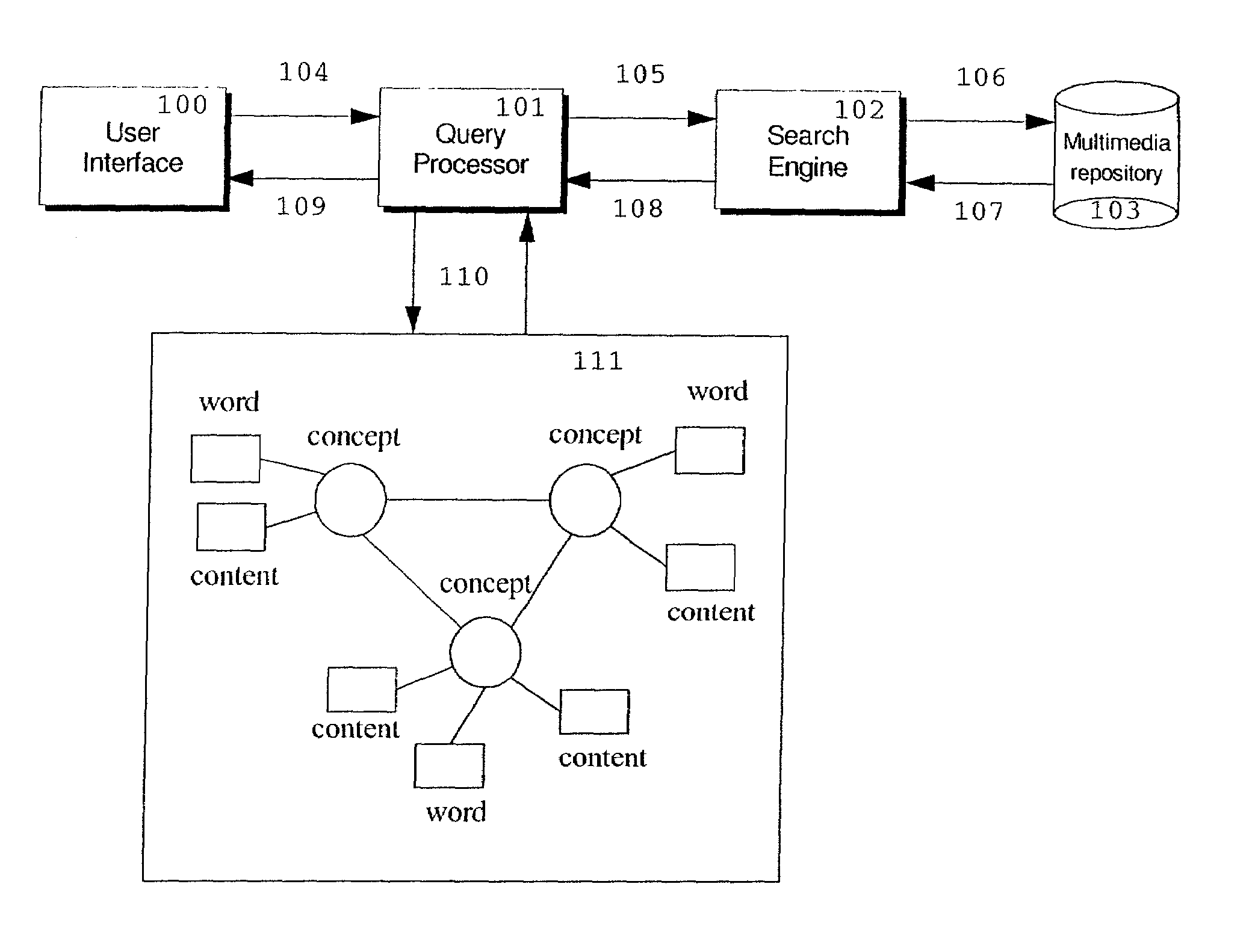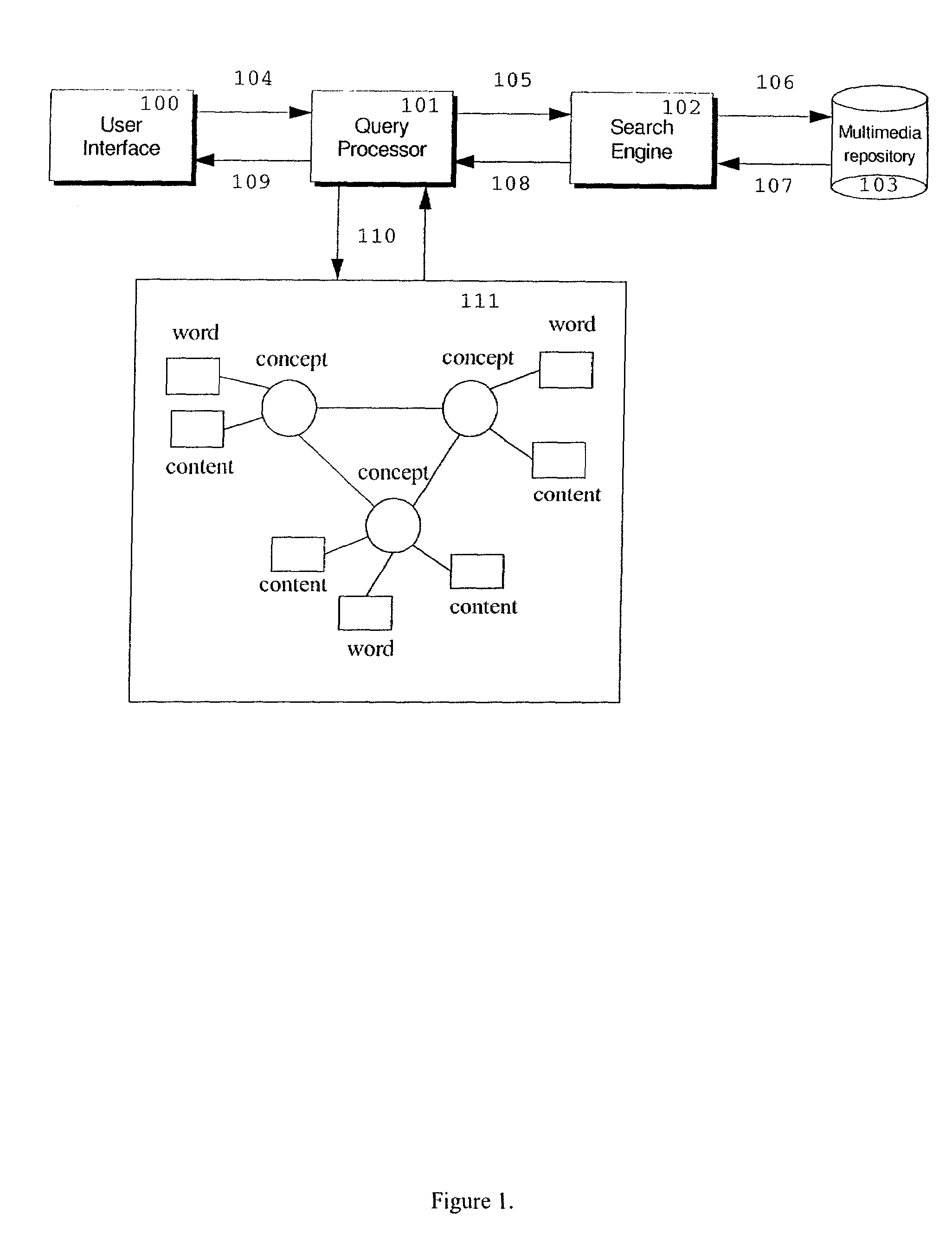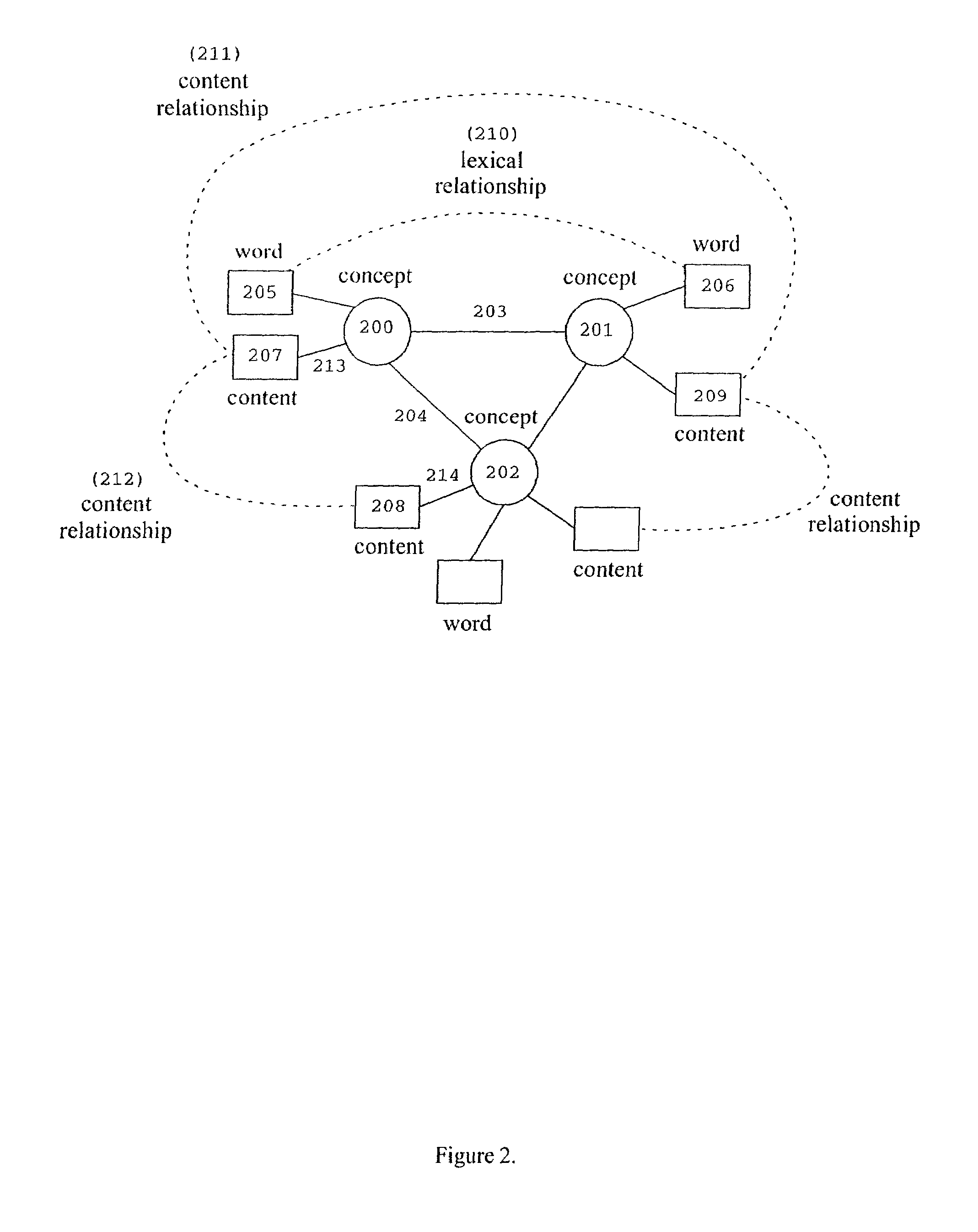Network for describing multimedia information
a multimedia network and network technology, applied in knowledge representation, instruments, computing models, etc., can solve the problems of not sufficiently addressing the audio-visual and perceptual aspects of concepts in wordnet and other textual representations of knowledge, and the mapping from the content level to the symbolic level by computer is quite limited and far from reaching human performance, so as to facilitate the extraction of knowledge, improve the performance of multimedia retrieval applications, and improve the performance of multimedia search and filtering applications.
- Summary
- Abstract
- Description
- Claims
- Application Information
AI Technical Summary
Benefits of technology
Problems solved by technology
Method used
Image
Examples
Embodiment Construction
[0024]FIG. 1 depicts a preferred embodiment of a multimedia information retrieval system having features of the present invention. As depicted, a user through a user interface (100) such as the Web-based graphical interface of the video retrieval system described by J. R. Smith, S. Basu, C. -Y. Lin, M. Naphade, and B. Tseng in “Integrating Features, Models, and Semantics for Content-based Retrieval,” published in the Proceedings of the Multimedia Content-based Indexing and Retrieval (MMCBIR) Workshop in 2001, (incorporated by reference herein) issues a query in step (104) to a multimedia information retrieval system. The query is handled by a query processor (101), such as the video query processor described by Smith, et al., that processes content-based and model-based queries for video content. The query processor analyzes the query and in step (110) accesses a media network knowledge representation (111) constructed in accordance with the invention. The access may involve searchi...
PUM
 Login to View More
Login to View More Abstract
Description
Claims
Application Information
 Login to View More
Login to View More - R&D
- Intellectual Property
- Life Sciences
- Materials
- Tech Scout
- Unparalleled Data Quality
- Higher Quality Content
- 60% Fewer Hallucinations
Browse by: Latest US Patents, China's latest patents, Technical Efficacy Thesaurus, Application Domain, Technology Topic, Popular Technical Reports.
© 2025 PatSnap. All rights reserved.Legal|Privacy policy|Modern Slavery Act Transparency Statement|Sitemap|About US| Contact US: help@patsnap.com



